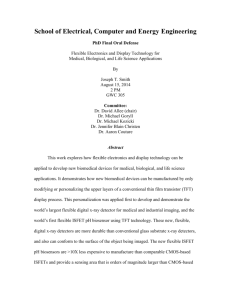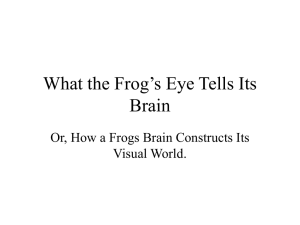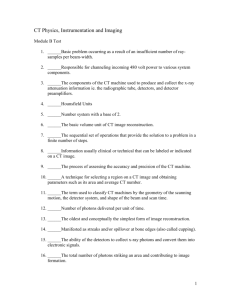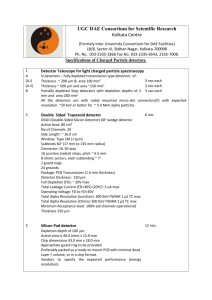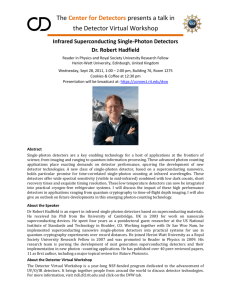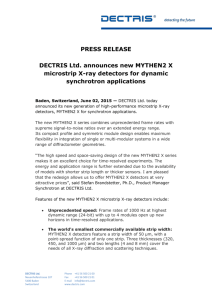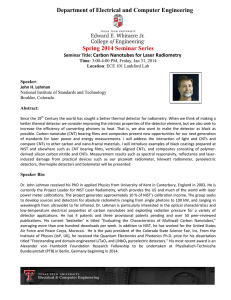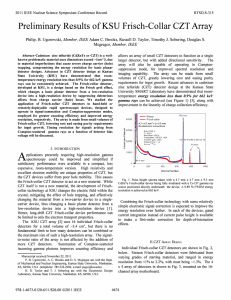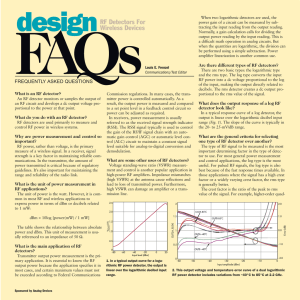(DQE) Measurement of a Cadmium Zinc Telluride (CZT) X-Ray
advertisement
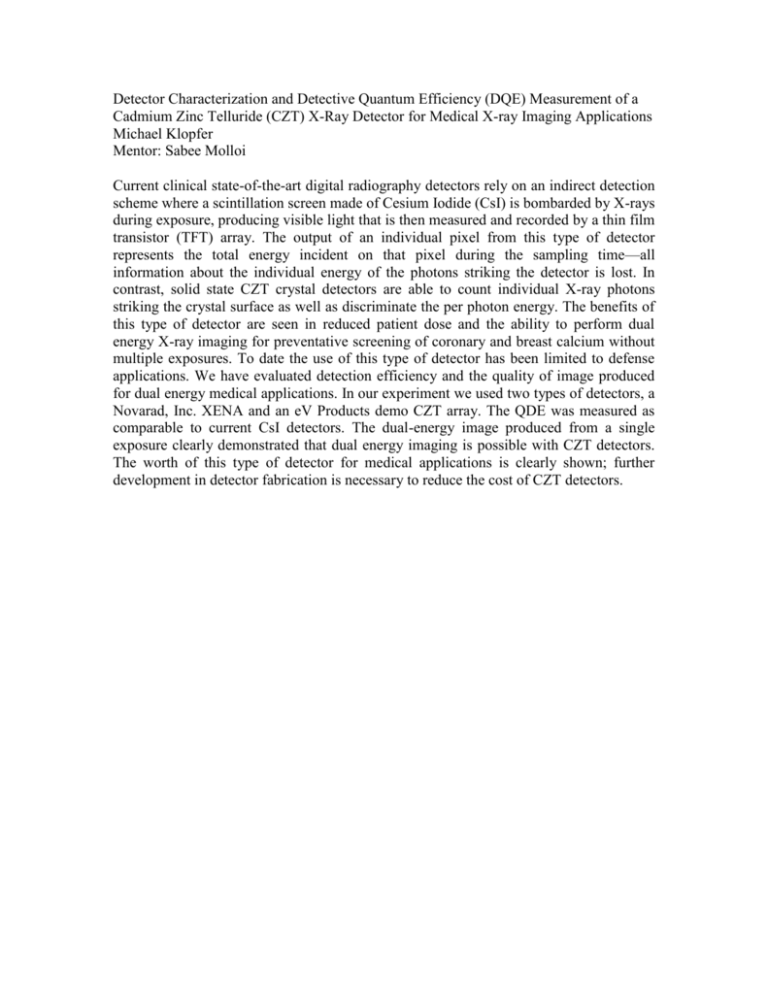
Detector Characterization and Detective Quantum Efficiency (DQE) Measurement of a Cadmium Zinc Telluride (CZT) X-Ray Detector for Medical X-ray Imaging Applications Michael Klopfer Mentor: Sabee Molloi Current clinical state-of-the-art digital radiography detectors rely on an indirect detection scheme where a scintillation screen made of Cesium Iodide (CsI) is bombarded by X-rays during exposure, producing visible light that is then measured and recorded by a thin film transistor (TFT) array. The output of an individual pixel from this type of detector represents the total energy incident on that pixel during the sampling time—all information about the individual energy of the photons striking the detector is lost. In contrast, solid state CZT crystal detectors are able to count individual X-ray photons striking the crystal surface as well as discriminate the per photon energy. The benefits of this type of detector are seen in reduced patient dose and the ability to perform dual energy X-ray imaging for preventative screening of coronary and breast calcium without multiple exposures. To date the use of this type of detector has been limited to defense applications. We have evaluated detection efficiency and the quality of image produced for dual energy medical applications. In our experiment we used two types of detectors, a Novarad, Inc. XENA and an eV Products demo CZT array. The QDE was measured as comparable to current CsI detectors. The dual-energy image produced from a single exposure clearly demonstrated that dual energy imaging is possible with CZT detectors. The worth of this type of detector for medical applications is clearly shown; further development in detector fabrication is necessary to reduce the cost of CZT detectors.
